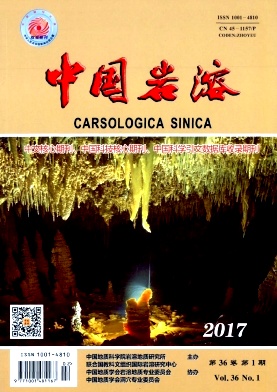Hydrochemical characteristics and mixing effect in Tongjing hot springs of Chongqing[J]. Carsologica Sinica, 2017, (1): 59-66. doi: 10.11932/karst20170107
| Citation: |
Hydrochemical characteristics and mixing effect in Tongjing hot springs of Chongqing[J]. Carsologica Sinica, 2017, (1): 59-66. doi: 10.11932/karst20170107
|
Hydrochemical characteristics and mixing effect in Tongjing hot springs of Chongqing
-
Abstract
The thermal reservoir temperature and the mixture of deep and shallow grounwater are discussed in this study,with the intention of providing a scientific basis for reasonable exploration,scientific evaluation and sustainable development and utilization of thermal water resources.Physical and chemical parameters of hot springs,karst groundwater and surface water in Tongjing,Chongqing were monitored and comparatively studied.Results show that the water chemistry of hot springs,the shallow karst water,and Wentang River belongs to type water of SO4-Ca · Mg,HCO3-Ca · Mg,and HCO3-Ca,respectively.Compared with the shallow karst groundwater and surface water,the higher values of TDS,Ca2+,Mg2+,SO42-,Si,B,and Sr are probably attributed to the runoff through the thermal reservoir formation and intense water-rock interaction.It was found that the methods of quartz without steam loss and modified SiO2 geothermometers rather than cationic and chalcedony geothermometers are more suitable for geothermometric calculation in Tongjing.An average reservoir temperature of 86 ℃ was estimated by the quartz without steam loss and modified SiO2 geothermometers.Based on the Na-K-Mg plot,the mixture of shallow karst water and thermal water occurred at deep aquifer.The mixture model and silicon-enthalpy diagram show that the ratios of mixture of cold water for the Yuanyang hot spring are 89% and 86%,respectively,and 80% and 79% for No.2 geothermal well water,respectively.The ratio of mixed cold water of No.2 geothermal well water is lower than that of the Yuanyang hot spring,probably because the No.2 geothermal well water is affected by the application of cement in the borehole wall protection.
-

-
-
Access History







 DownLoad:
DownLoad: